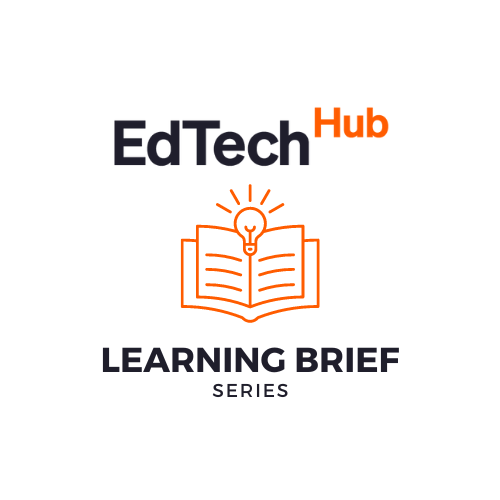How Can Decision-Makers Assess EdTech Interventions for Cost-Effectiveness to Enable Better Investments?
Part of the learning brief series
quick insights
full brief (pdf)
full brief (text)
A guide for
- Policymakers
- Implementers
- EdTech Investors
Why this matters
As education decision-makers increasingly look to EdTech tools and interventions to help catalyse impact on education outcomes, cost-effectiveness is among their most important concerns. Put simply, cost-effectiveness is about how much an intervention will cost to deliver a specific level of impact over a given length of time. But while effectively calculating the cost-effectiveness of EdTech interventions is crucial to maximising the impact of scarce resources available for investment in education, it is not a straightforward process. Given the depth of the learning crisis in many low- and middle-income countries, significant pressure to adopt EdTech solutions exists, which can be risky without adequate consideration for the total cost of implementing such interventions and inconsistencies that exist around learning outcome measurement.
To fully realise the promise of EdTech in addressing global learning poverty decision-makers will need to ensure that interventions are cost-effective and contextually relevant. Read on to explore how this kind of cost-effectiveness analysis can be done when making decisions on EdTech investments.
full brief (pdf)
full brief (text)
Key insights to improve practice
- Compare the gains of programmes with and without tech components to determine whether procuring technology is an optimal and cost-effective solution within any given scenario.
- Calculate the total cost of implementation (TCI) by accounting for obvious and non-obvious costs over the lifespan of implementation.
- Work in alignment with existing frameworks and tools for cost-effectiveness calculations to increase the capacity of decision-makers to make consistent cost comparisons.
- Require detailed, context-specific and transparent data from EdTech providers on cost and scale of outcomes from proposed implementations.
Areas for further exploration
To ensure higher standards and expectations in cost-effectiveness analysis are embedded into decision-making, you should consider:
- How to equip decision-makers with tools to improve comparability, transparency, and accountability in EdTech cost-effectiveness analysis?
- How to understand the specific barriers and constraints that decision-makers currently face when trying to operationalise cost-effectiveness tools?
Useful tools and resources
A curated list of resources from EdTech experts to help continue your exploration of this topic.
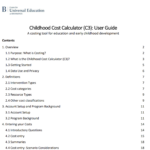
Childhood Cost Calculator
a tool by centre for universal education at brookings

Cost Measurement Guidance Note
a resource by building evidence in education
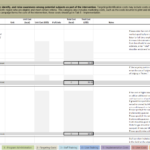
An Extensive Costing Template (Excel)
go to costing template by jpal
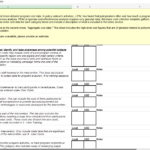
A Basic Costing Template (Excel)
go to costing template by jpal
Quick insights on one page
Dive into our one-page summary for quick, practical guidance. Click the image to view, print, or download.
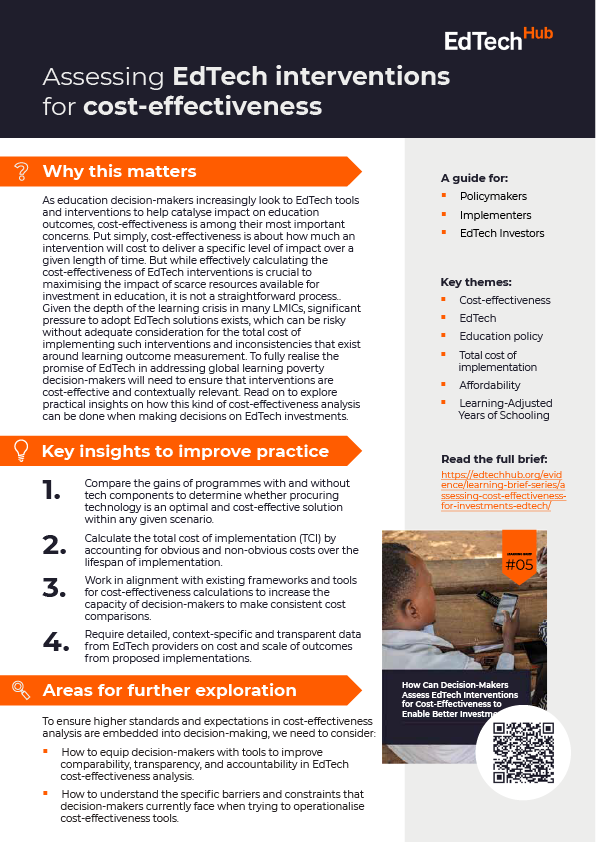
full length brief
Twitter
LinkedIn
Email
Explore more from our learning brief series
Approaches to learning and engagement with EdTech
Communities of practice and participatory methods for EdTech
Education management systems (EMIS) for EdTech
Want to amplify the impact of this learning brief?
Share a quick card to help others access the latest evidence in EdTech. Your click can help share valuable insights.
Or, share the citation for this learning brief directly to our evidence library.
Your questions answered ?
Please contact EdTech Hub if you have any questions about our learning brief series, or if you would like to share your ideas for new learning brief topics which would help you in your work.
Citation
Plaut, D. (2024). How Can Decision-Makers Assess EdTech Interventions for Cost-Effectiveness to Enable Better Investments? [Learning Brief]. EdTech Hub. https://doi.org/10.53832/edtechhub.1018

